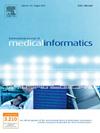影响因素:揭示远程医疗保健利用和采用/避免决策的模式和原因。
IF 3.7
2区 医学
Q2 COMPUTER SCIENCE, INFORMATION SYSTEMS
International Journal of Medical Informatics
Pub Date : 2024-12-30
DOI:10.1016/j.ijmedinf.2024.105781
引用次数: 0
摘要
背景:2019冠状病毒病大流行加速了远程医疗的迅速扩张,突显了在了解影响其使用的人口和健康因素方面的差距。探索个人选择远程医疗背后的原因可以指导促进不同人群采用远程医疗的战略。方法:对参与2022年健康信息全国趋势调查的5119名参与者的数据进行分析。因变量包括远程医疗的使用情况以及选择或避免远程医疗的原因。独立变量包括人口统计、一般健康和心理健康。使用多重逻辑回归模型检验相关性。结果:更高的远程医疗使用的几率显著相关的主要因素包括教育(大学毕业生:或= 1.57,95% CI[1.19, 2.06]),性别(男:或= 0.69,95% CI[0.55, 0.87]),农村居住(nonmetro:或= 0.72,95% CI[0.53, 0.97])、抑郁(OR = 2.91, 95% CI[2.29, 3.71])、年龄(例如,35-49:或= 1.66,95% CI[1.2, 2.29]),和一般健康状况(好:= 0.78,95%可信区间(0.61,1),优秀或良好:= 0.74,95%可信区间[0.58,0.95])。老年人更喜欢远程医疗,因为方便,但倾向于避免它,而倾向于亲自就诊。亚洲和其他群体不太可能使用远程医疗寻求建议,也不太可能邀请其他人来就诊。结论:远程医疗利用在性别、年龄、教育程度、健康状况和城市化水平方面存在差异。政策制定者应将重点放在公平的交付方法、更新的监管框架和减少获取差距上,特别是在服务不足的社区。本文章由计算机程序翻译,如有差异,请以英文原文为准。
Influencing factors: Unveiling patterns and reasons in telehealth care utilization and adoption/avoidance decisions
Background
The rapid expansion of telehealth, accelerated by the COVID-19 pandemic, has highlighted gaps in understanding demographic and health factors shaping its use. Exploring reasons behind individuals’ choices regarding telehealth can guide strategies to promote adoption among diverse populations.
Methods
Data from 5,119 participants in the 2022 Health Information National Trends Survey were analyzed. Dependent variables included telehealth usage and reasons for choosing or avoiding it. Independent variables included demographics, general health, and mental health. Associations were examined using multiple logistic regression models.
Results
Factors significantly associated with higher odds of telehealth use included education (college graduate: OR = 1.57, 95 % CI [1.19, 2.06]), gender (male: OR = 0.69, 95 % CI [0.55, 0.87]), rural residency (nonmetro: OR = 0.72, 95 % CI [0.53, 0.97]), depression (OR = 2.91, 95 % CI [2.29, 3.71]), age (e.g., 35–49: OR = 1.66, 95 % CI [1.2, 2.29]), and general health status (good: OR = 0.78, 95 % CI [0.61, 1], excellent or very good: OR = 0.74, 95 % CI [0.58, 0.95]). Older individuals preferred telehealth for convenience but inclined to avoid it in favor of in-person visits. Asian and other group were less likely to use telehealth for seeking advice and including others in visits.
Conclusions
Disparities in telehealth utilization were observed across gender, age, education, health status, and urbanization levels. Policymakers should focus on equitable delivery methods, updated regulatory frameworks, and reducing access disparities, especially in underserved communities.
求助全文
通过发布文献求助,成功后即可免费获取论文全文。
去求助
来源期刊

International Journal of Medical Informatics
医学-计算机:信息系统
CiteScore
8.90
自引率
4.10%
发文量
217
审稿时长
42 days
期刊介绍:
International Journal of Medical Informatics provides an international medium for dissemination of original results and interpretative reviews concerning the field of medical informatics. The Journal emphasizes the evaluation of systems in healthcare settings.
The scope of journal covers:
Information systems, including national or international registration systems, hospital information systems, departmental and/or physician''s office systems, document handling systems, electronic medical record systems, standardization, systems integration etc.;
Computer-aided medical decision support systems using heuristic, algorithmic and/or statistical methods as exemplified in decision theory, protocol development, artificial intelligence, etc.
Educational computer based programs pertaining to medical informatics or medicine in general;
Organizational, economic, social, clinical impact, ethical and cost-benefit aspects of IT applications in health care.
 求助内容:
求助内容: 应助结果提醒方式:
应助结果提醒方式:


